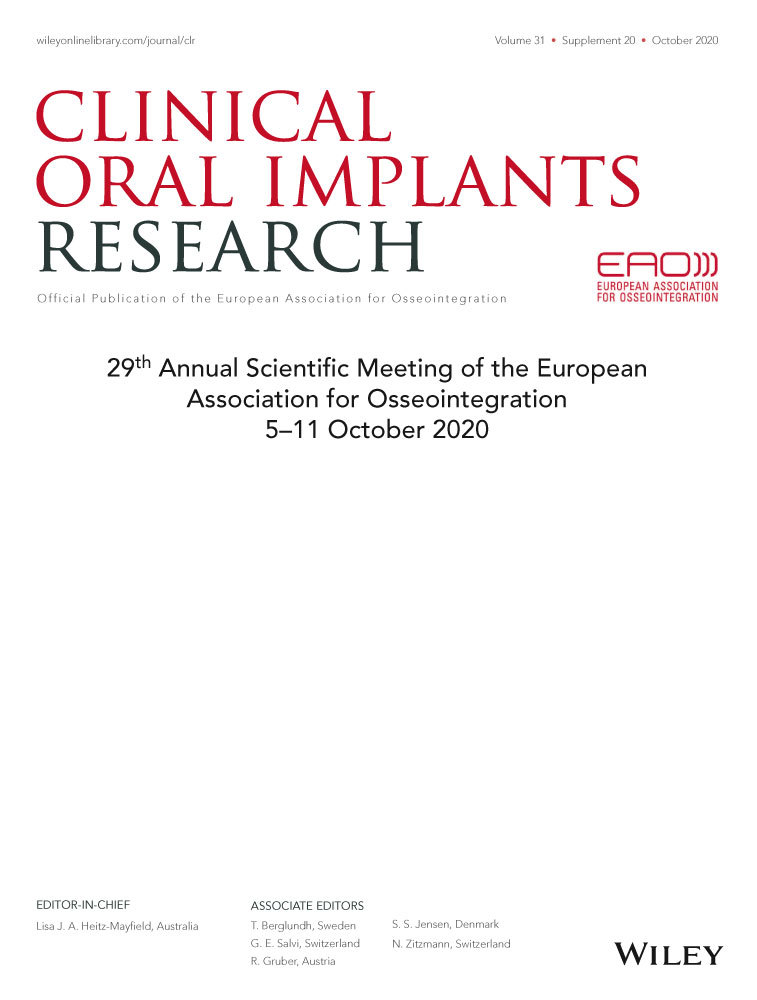Ex-vivo comparison of three different gingival phenotype assessment methods – preliminary results
Q51F0 ePOSTER BASIC RESEARCH
Background: Soft tissue thickness can have a major impact on treatment outcomes in implant dentistry, periodontology and fixed prosthodontics. Consequently, different methods to assess the gingival phenotype have been introduced. Distinction based on probe transparency through the gingival sulcus is the clinically most common technique.
Aim/Hypothesis: To compare ex-vivo three different gingival phenotype assessment methods based on soft tissue transparency on different backgrounds and different experience levels to distinguish between low and high risk cases.
Materials and Methods: Three different probes have been assessed: 1) traditional periodontal probe PCP12, dichotomous classification (thin vs. thick; Hu-Friedy); 2) double-ended periodontal probe DBS12, differentiation in thin/moderate/thick (Deppeler); 3) colour-based phenotype probe CBP, four subgroups (very thin/thin/thick/very thick; Hu-Friedy). Overall, 24 gingival pieces were retrieved from ten upper pig jaws with tissue thickness ranging from 0.2 to 1.25 mm. Each soft tissue sample was photographed with each probe underneath and categorised whether the probe is visible through the tissue or NO-visible. Trying to mimic an every-day clinical setting, different backgrounds were made of dental composite in colours A2, A3 as well as A4 and pictures were taken with a digital mirror-reflex camera with a 300 mm working distance. To assess the influence of multiple experience levels, dentists, dental undergraduate students and laypersons (n = 10), respectively, were asked to categorize all pictures (n = 432).
Results: The dichotomous differentiation using a PCP12 probe showed a threshold level around 0.5 mm. For distinction between thin and moderate, a similar border was found for the double-ended phenotype probe DBS12 while soft tissue range for moderate thickness was between 0.5 – 0.8 mm and for thick above 0.8 mm, respectively. Again, CBP showed the same threshold around 0.5 mm for very thin versus thin as seen with the other probes, however, above 0.8 mm predominantly very thick was chosen. Hence, distinction between thick versus very thick seems to be hardy possible based on this color based method. Background colour and investigator experience seemed to have no to only minimal impact. Further statistical analysis will be performed .
Conclusions and Clinical Implications: Based on these preliminary descriptive results, differentiation in more than thin vs. thick seems clinically preferable, especially, if gingival thickness will have a major impact on treatment outcome as reported for immediate implant placement or recession coverage procedures. If more than three categories are necessary seems questionable since only minor differences were found above 0.8 mm tissue thickness for the tested methods.
Keywords: gingival phenotype, soft tissue thickness, periodontal probe, probe transparency, assessment tool




